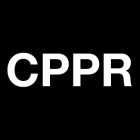
Three Steps to Combatting the Ad Fraud Challenge

Imagine a business where the CFO allowed a margin of error
of 50% or the COO allowed 50% deficiencies in its supply. Or where 50% of product wastage through theft
was tolerated. It sounds crazy doesn’t it?
And yet CMOs have been tolerating 50% inefficiencies in
digital media for years.
An advertiser may buy 1 million impressions but, according
to the latest report on digital fraud from ANA
and White Ops, between 30,000 and 370,000 of those impressions will be a
total waste as they will not be seen by one human eyeball. The same report estimates that £5bn ($7.2bn) will
be lost due to online ad fraud in 2016 – and with fraud only being one element
of wastage in digital advertising, adding to other issues such as viewability
and ineffective frequency capping, this is adding up to significant levels of
wastage.
Ad fraud is the single biggest issue in digital advertising
today. However creative an ad campaign
is, and however smart an agency is at optimising it, this all amounts to
nothing unless the ads are being viewed by humans.
Most marketers seem to think that fraud is hitting display
advertising predominantly, but it’s everywhere.
Fraud in the mobile
space is a huge issue; and then there are online video ads - the ANA report
has quantified that one in four of these are viewed by bots. With the higher CPMs, or cost, of buying
video impressions compared to other digital advertising, the level of video
fraud is set to grow as it makes
economic sense for fraudsters to focus on this sector.
Ad fraud affects the whole industry, but it is particularly
affecting the advertiser as they are essentially having to pay for it. Shockingly, for each of the 49 advertisers
who participated in the ANA study, the average loss due to fraud was $10
million per annum – or, to put it in another, less euphemistic way, almost
$30,000 is being stolen from each of them every
day.
With spend on programmatic continuing to rise, especially as
traditional linear TV budgets are being shifted into video and programmatic TV,
these levels are simply unsustainable. What is a $5bn loss today has the
potential to be three times bigger unless the problem is tackled. The whole of
the legitimate digital advertising ecosystem needs to work together to mitigate
the problem of ad fraud but what can brands specifically do right now to turn
the tide?
Shift from detection
to prevention
Particularly for the large global advertisers who are losing
most to fake traffic, there needs to be advancement from fraud detection to
fraud prevention. Post bid detection is still important – by identifying where
fraud is happening, brands can shift spend quickly away to other sites and
create automated white lists and black lists to optimise the targeting of
brand-safe, fraud-free sites.
However, they should also invest in the creation of an agile
and effective automated decisioning process which continually learns (as fraud
shifts) and makes a judgement based on all the data available on whether or not
to bid before the bid happens.
Create transparent partnerships
Another critical step is to demand greater transparency from
partners. The majority of advertisers are still outsourcing their digital
campaigns and/or using multiple technology systems, all of which makes it
extremely hard to identify where their ads are actually being shown and who is
viewing them. Indeed, Jim Kisza, senior manager for digital strategy at
Kellogg’s, has likened getting a view on his digital spend to a detective story
‘where you had to piece together the evidence’.
The opaque nature of much of the online advertising world is
therefore acting as a cloak that helps fraudsters to hide their activity. This is one of the reasons why the ANA set up
its taskforce with the American Association of Advertising Agencies to tackle the
transparency issue. Advertisers must ask difficult questions to identify
every participant in their media supply chain and the role that each one plays
– and then demand evidence of where their ads are running. Media buying contracts should also stipulate
that only authentic human web traffic will be paid for.
Marketers should also question the need for using a number
of different technology platforms to manage their advertising as this can add
another layer of unnecessary complexity – with each system using different tools
and systems to detect fraud and often working against each other; one system
may reject an impression it believes to be fraudulent, only for the same
impression to be consumed by another system with different algorithms.
Only by de-cluttering the media supply chain is it possible
for an advertiser to dissect where its media spend is going and get a clear
view on the tools, platforms and techniques its technology partner is using to
verify, detect and eliminate fraud. Without this kind of singularity and clarity
it is extremely difficult to assess whether the fraud detection has the
sophistication and effectiveness required.
Set the standards
The measurement of campaigns can also play a role in
tracking where authentic human traffic is coming from. It’s important to
question how campaigns are evaluated as measurements such as landing page
visits and click through rates are prevalent with fake activity. Conversely, more
stringent KPIs such as sales conversion, subscriptions or email sign ups are
significantly more likely to indicate that you are reaching people rather than
bots.
It is also important to challenge technology partners to
provide an understanding of how effective their anti-fraud capabilities are
against industry standards. E.g. if media valuation firm Integral
Ad Science has evaluated ad fraud in the UK at 7.8% of impressions, then this
can be used as a benchmark against which to agree an ‘acceptable’ level of
non-human traffic and should also be included in KPIs.
As ad dollars increasingly move into digital advertising, more fraudsters will follow. The key learning for advertisers should therefore be that they need greater transparency and control. Brands must be clear on expectations and set high standards to ensure that all industry players do their utmost to combat this problem.
Mike Peralta, CEO, AudienceScience










